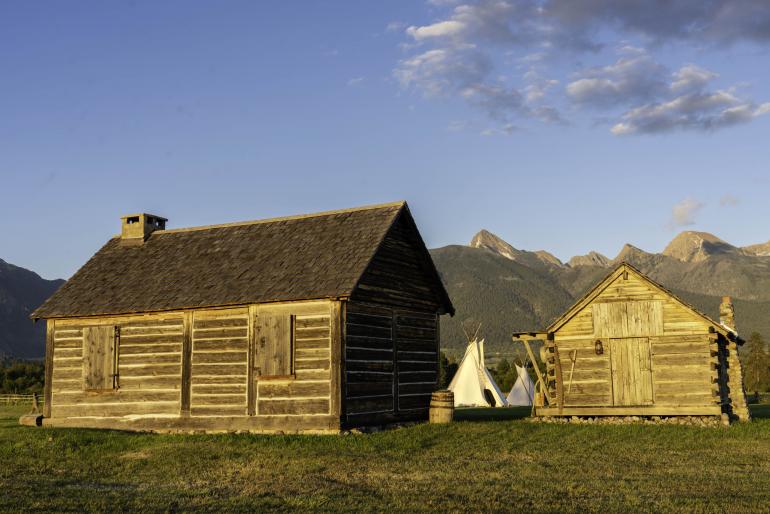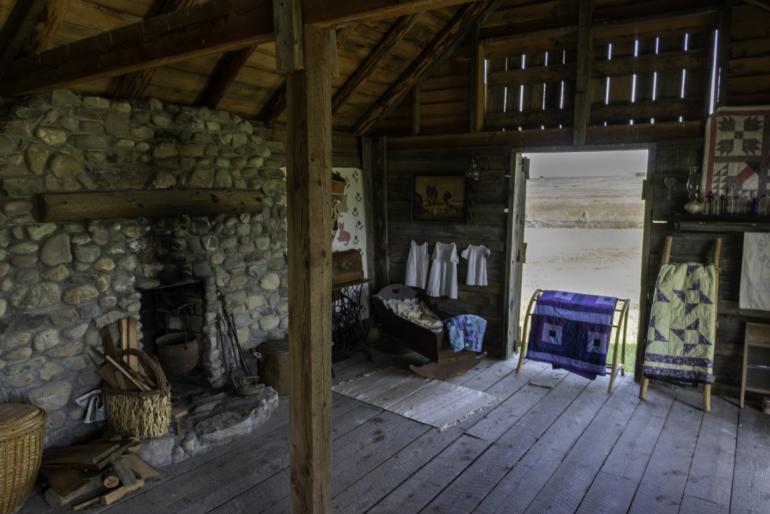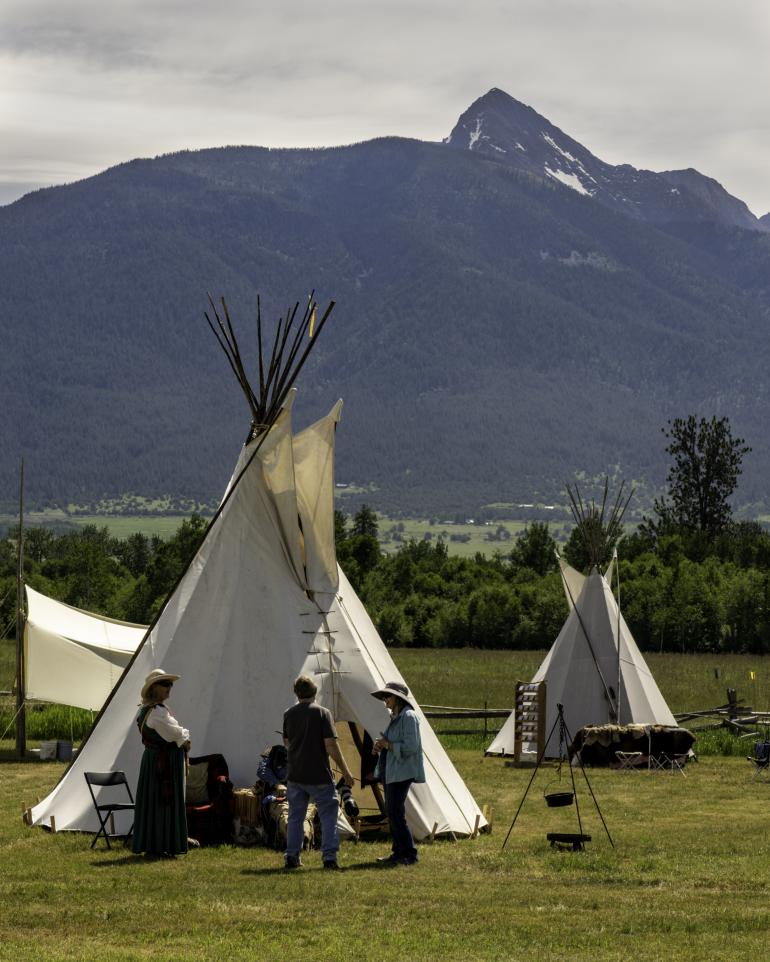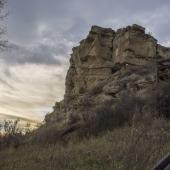Historic Fort Connah – The Last Hudson Bay Trading Post in the US

Photo by Doug Stevens
Nestled in the southern end of the Mission Valley, just north of the town of St. Ignatius in western Montana, is the state’s oldest building still standing – Fort Connah.

Although Fort Connah was scouted and founded in 1846 by Neil McArthur, it is mostly associated with Angus McDonald, who, along with his Nez Perce wife, Catherine, oversaw its construction and ran the trading post for many years.
The original fort consisted of several small log buildings, a log corral and a bastion measuring 14 square feet. It was an important link between Hudson Bay posts on either side of the mountains. Today, the only surviving original building is the storehouse. The others are from the same period and have been refurbished and moved onto the site to somewhat replicate the buildings that were originally there. The Fort Connah Restoration Society was formed in 1975 to help preserve this important link to Montana’s past and has taken on the responsibility for its upkeep and development. Additional information can be found on its website, as well as here

Fort Connah was the final Hudson Bay trading post to operate in the US. After the border between Canada and the US was finalized in the 1860s, the fort, then run by Angus’ son, Duncan McDonald, (who was born at the fort), was forced to close in 1871. Fort Connah can trace its origin back to David Thompson’s “Saleesh House” that was built near present day Thompson Falls in 1810.
Saleesh House was established to trade in furs of smaller mammals, such as beaver, ermine, and fox. However, as these species played out, the fort moved east a couple of times until arriving in the Mission Valley in 1846. By then, the trade had transitioned to trading for buffalo hides. Ft Connah was Hudson Bay’s most profitable trading post at the time, exporting over 5,000 hides to Europe in 1852. Back then, a buffalo hide would trade for about $30.

Also inherited from the David Thompson example was the importance of making close friends with the local Native population as a way to build trust – important in the trading business. The area around what is now St. Ignatius was home to the Pend d’Orielle chief, Sil-Lit-Stoo. McDonald and Sil-Lit-Stoo became close friends over the years. When McDonald returned to the Mission Valley after a stint on the Colville Reservation in Washington, Sil-Lit-Stoo gave Angus 143 acres that bordered the fort. The original name of the fort was Fort Connen, after a river in Angus’ native Scotland. However, Sil-Lit-Stoo and the other Indians had such a hard time pronouncing it that it was changed to Fort Connah.

Angus, Catherine, and several descendants are buried in a family plot just east of the fort, and included is also the grave of Sil-Lit-Stoo, who passed away in 1849. Angus insisted Sil-Lit-Stoo be buried with him and Catherine. Much of the current online resources about Fort Connah say little, if anything, about Chief Sil-Lit-Stoo and the importance of the role he played in the success of the fort.
Twice a year (until Covid hit), the fort usually hosts a “Rendez-vous”, allowing visitors to experience what life at the fort was like back then. This past weekend saw the first gathering since the pandemic hit.
 Tipis are pitched around the fort, and people wear period dress to set the mood. Apart from demonstrations of blackpowder rifles and atlatl spear throwing, there is always a bagpipe band, raising of the American and Hudson Bay flags and a presentation by Dr. Joe McDonald. Joe, who was the founder and past president of Salish Kootenai College, is the great-grandson of Angus and was raised on the adjacent property given to Angus by Sil-Lit-Stoo. Joe passes on the oral history about the fort and the McDonalds that he heard growing up.
Tipis are pitched around the fort, and people wear period dress to set the mood. Apart from demonstrations of blackpowder rifles and atlatl spear throwing, there is always a bagpipe band, raising of the American and Hudson Bay flags and a presentation by Dr. Joe McDonald. Joe, who was the founder and past president of Salish Kootenai College, is the great-grandson of Angus and was raised on the adjacent property given to Angus by Sil-Lit-Stoo. Joe passes on the oral history about the fort and the McDonalds that he heard growing up.
It really is a “living history” experience.
Keep an eye on those websites for postings for the upcoming expected fall Rendez-Vous, probably in September, and plan on coming. Entrance is free, and the setting at the base of the Mission Mountains is breathtaking!

Photo by Doug Stevens












- Reply
Permalink